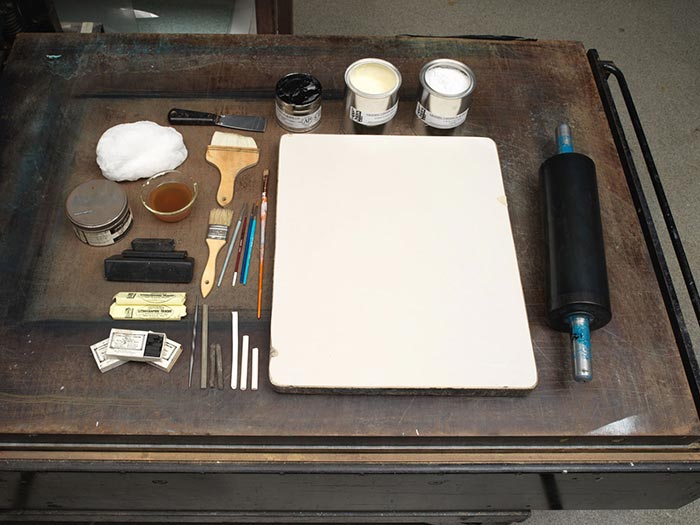A New Jersey Fox Hunt: "Taking Breath"
Thomas B. Worth American
Publisher Currier & Ives American
Not on view
In the center of this comical fox hunting scene, an exhausted donkey (facing the viewer) snorts breath from its mouth. A boy sits on the donkey's back; he is dressed in a red jacket, too big black boots, and a too big, striped, visored cap. As he sits on his resting donkey, he puffs smoke from a big cigar, which he has just lit with a match held in his right hand. Sitting in the foreground are six panting, exhausted dogs: four are at the lower right (one of them is lying down), and two dogs are at the lower left. All of them have their tongues hanging out. In the left middleground, a pert fox sits and looks at the worn out hunters. Clumps of leafless bushes are in the background,
Nathaniel Currier, whose successful New York-based lithography firm began in 1835, produced thousands of prints in various sizes that together create a vivid panorama of mid-to-late nineteenth century American life and its history. People eagerly acquired such lithographs featuring picturesque scenery, rural and city views, ships, railroads, portraits, hunting and fishing scenes, domestic life and numerous other subjects, as an inexpensive way to decorate their homes or business establishments. As the firm expanded, Nathaniel included his younger brother Charles in the business. In 1857, James Merritt Ives (the firm's accountant since 1852 and Charles's brother-in-law) was made a business partner; subsequently renamed Currier & Ives, the firm continued until 1907.
The late nineteenth-century Darktown prints by Currier & Ives depict racist stereotypes that are offensive and disturbing.The Metropolitan Museum of Art preserves such works to shed light on their historical context and to enable the study and evaluation of racism.
In this print, a caricatured, wide-eyed Black (African American) man has wrapped his arms and legs around the smokestack of a train engine (the locomotive --in a cropped side view--heads from right to left). A large bicycle wheel loops around the man's legs-- evidence that he had been riding a high-wheeled bicycle and collided into the train. The ttle and caption --imprinted in bottom margin-- imply that the accident has knocked the man's head so severely that instead of "seeing stars," he says --in his crazy daze-- that he has "struck a comet."
Nathaniel Currier, whose successful New York-based lithography firm began in 1835, produced thousands of prints in various sizes that together create a vivid panorama of mid-to-late nineteenth century American life and its history. People eagerly acquired such lithographs featuring picturesque scenery, rural and city views, ships, railroads, portraits, hunting and fishing scenes, domestic life and numerous other subjects, as an inexpensive way to decorate their homes or business establishments. As the firm expanded, Nathaniel included his younger brother Charles in the business. In 1857, James Merritt Ives (the firm's accountant since 1852 and Charles's brother-in-law) was made a business partner; subsequently renamed Currier & Ives, the firm continued until 1907.

